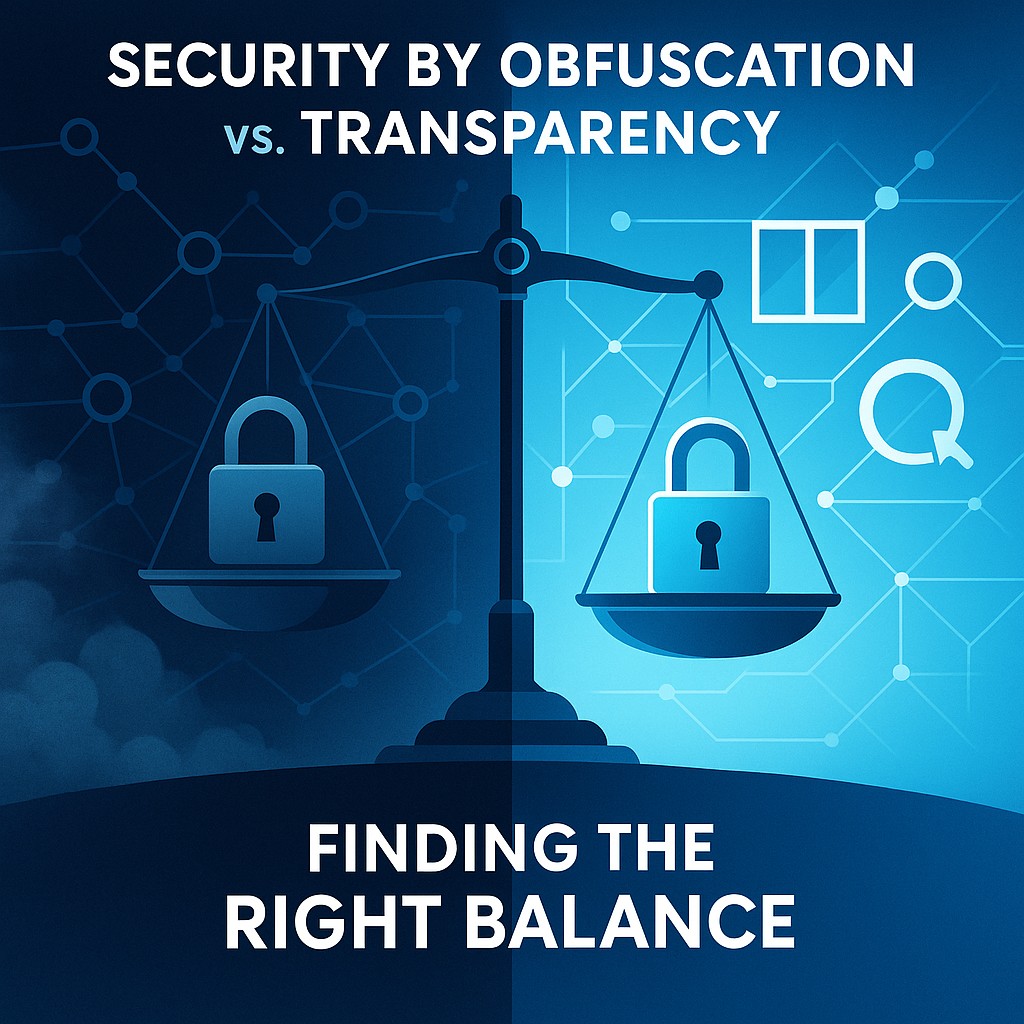Finding the Right Balance
Digital security is a constant concern. Developers and security professionals often face a core question: Should we hide system details or make them visible? This leads to a long-standing debate that involves everyone, including gaming sites like Slotsgem, regarding security through obfuscation versus security through transparency.
Each method has its benefits and risks. The best approach is often a careful mix of both. This article explores where each strategy is and provides guidance on how to utilise them effectively.

What is Security by Obfuscation?
Obfuscation means hiding system details to confuse or slow attackers. It includes:
- Hiding CMS versions in code
- Renaming admin URLs
- Masking API paths
- Using deception tools like SCANTRAP
These tactics aim to block automated scans or delay intrusions. If attackers can’t see what’s running, they may miss known flaws.
But obfuscation is not real protection. It doesn’t fix vulnerabilities. It only makes attacks slightly harder.
When Obfuscation Helps
1. Reduces Bot Traffic
Many online attacks come from bots. These scripts scan sites looking for specific targets. Hiding versions or using fake endpoints makes bots less effective.
2. Buys Time for Response
Even a short delay can help. If attackers are slowed down, defenders have more time to react.
3. Lowers Visibility
Fewer clues mean fewer opportunities. Attackers may skip unclear systems and move to easier targets.
When Obfuscation Hurts
1. Slows Down Debugging
Hidden endpoints or masked errors make it harder for developers to fix problems. Missing information leads to longer fixes.
2. Creates False Security
Teams may stop patching or monitoring, thinking they’re safe. But hidden flaws are still flaws.
3. Reduces Trust
Users and clients may see too much secrecy as suspicious. Transparency helps build credibility. Over-hiding can damage that.
4. Causes Compatibility Problems
Some tools need visible structures. Obfuscation may break updates, plugins, or compliance checks.
What is Security by Transparency?
Transparency means open systems. It includes clear logs, visible errors, and disclosed components. The idea is simple: Focus on strong, visible defenses rather than hiding.
Transparency helps teams debug faster and makes audits easier. It also strengthens community support, especially in open-source ecosystems.
When Transparency Helps
1. Easier Troubleshooting
Clear logs and version info shorten repair time. Transparency also supports audits and security checks.
2. Stronger Community Defense
Public versioning helps others spot and patch issues quickly. Open systems improve faster.
3. Builds User Trust
Users feel safer when systems are predictable. Clear communication and visible security features boost confidence.
When Transparency Risks Security
Transparency improves trust, debugging, and compliance—but it can also create risk. Revealing too much system information may help attackers. Detailed error messages, visible software versions, and exposed API endpoints can all serve as roadmaps for exploitation. While open communication is important, not all data should be public. Cybercriminals often use exposed details to target known vulnerabilities. The key is balance: share what supports users and internal teams, but conceal what invites attack. Strategic transparency builds confidence without compromising safety. In security, being open is good—but being selective is essential to avoid turning clarity into a liability.
Blending Obfuscation and Transparency
The best approach is not one or the other. It’s both.
Smart tools like SCANTRAP use controlled deception. They mislead bots without affecting real users. At the same time, tools like security headers or application firewalls show that strong defenses are in place—without exposing sensitive data.
Bug bounty programs and incident reports show transparency in action. They invite ethical hacking and public trust while protecting core systems.

The Middle Ground
Security isn’t black and white. It’s a spectrum where both obfuscation and transparency play important roles. Obfuscation can reduce noise from automated attacks and buy valuable time during incident response. On the other hand, transparency enhances system reliability, simplifies debugging, and builds trust with users and auditors.
The right approach is a thoughtful combination of both. Start with strong core security—regular patching, robust firewalls, and strict access control. Then, apply light obfuscation only where it minimizes unnecessary exposure, such as masking error messages or hiding system versions. Maintain strategic transparency by clearly documenting processes, sharing relevant information, and supporting auditability.
A practical guideline is: “Obscure, but never alone.” Obfuscation should complement, not replace, foundational defenses. When used together, these strategies create a security posture that is both resilient to threats and transparent enough to earn user trust. In modern cybersecurity, balance is not optional—it’s essential.